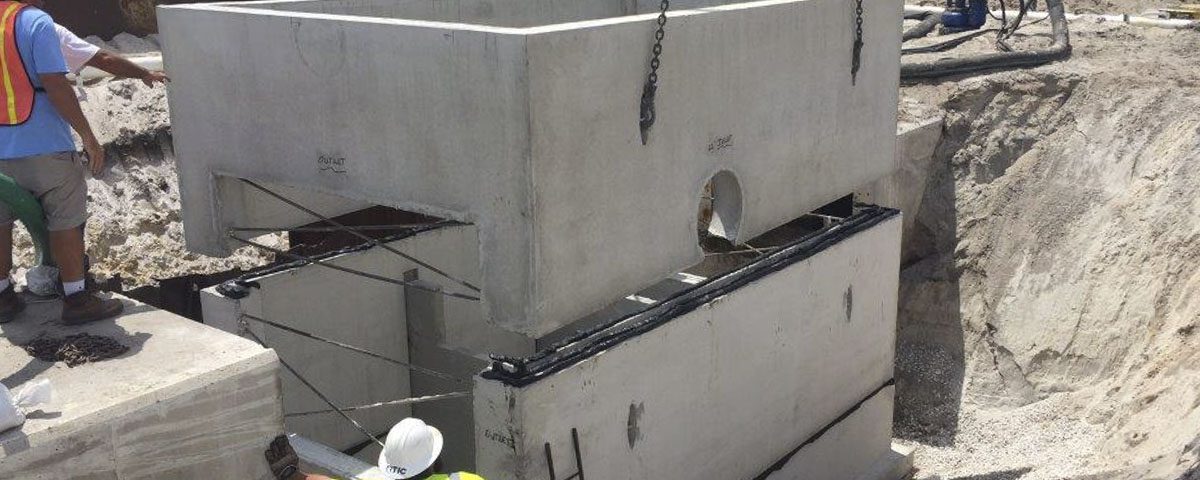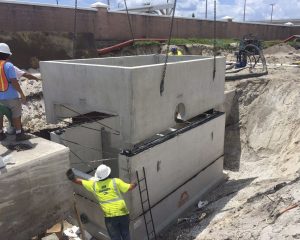New sediment trap to benefit Banana River Lagoon water quality

A second-generation baffle box was installed near South Patrick Drive in Brevard County and will capture nitrogen and phosphorus before they can reach the Banana River Lagoon.

A second-generation baffle box was installed near South Patrick Drive in Brevard County and will capture nitrogen and phosphorus before they can reach the Banana River Lagoon.
PALM BAY, Fla., Aug. 29, 2017 — Brevard County installed a state-of-the art second-generation “baffle box” with a high-tech chamber that will capture and treat nitrogen and phosphorus before they can reach the Banana River Lagoon, which is part of the Indian River Lagoon. The St. Johns River Water Management District is a funding partner in this cost-share project, as well, as the Florida Department of Environmental Protection.
“Every stormwater project completed in the Indian River Lagoon is another step toward improving the estuary’s overall water quality,” said St. Johns River Water Management District Executive Director Dr. Ann Shortelle. “We’re excited to partner with Brevard County on this and several other projects aimed at reducing stormwater impacts on the lagoon.”
“This project could not have been implemented without funding from our partners, St. Johns River Water Management District and the Florida Department of Environmental Protection,” said Carolina Alvarez, Brevard County Watershed Management Program engineer. “We always look forward to partnering with the District as the county implements projects to improve the condition of the lagoon. In addition, the South Patrick Air Force Base, where the project is located, is happy to see this project come into fruition, as it will also prevent debris from South Patrick Drive from floating into the base’s stormwater ponds and the Banana River.”
The sediment trap is known as a “second-generation” model with an innovative nitrogen-removing bioreactor to reduce nutrient loading from a 74-acre residential area.
The District contributed $57,750 to the $195,000 construction cost. The project will remove 48 pounds per year of total phosphorus and 244 pounds per year of total nitrogen from the Banana River Lagoon.

